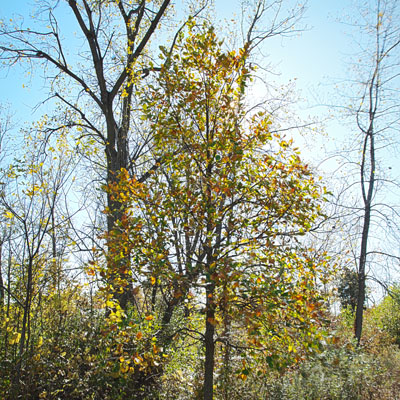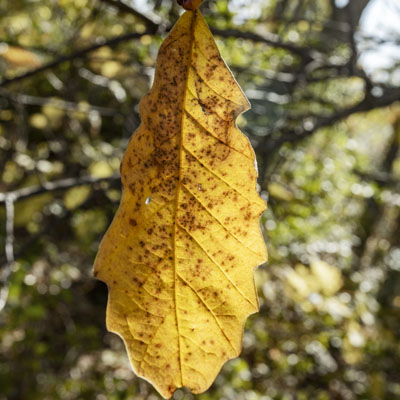Tree Catalog - Best Trees For Dayton, Ohio
Welcome to the Arbor Experts Tree Catalog, where you'll find photos and complete descriptions of the trees we most highly recommend for the Dayton, OH area. All of these trees will do well here and would be a beautiful addition to your yard.
Swamp White Oak
Quercus bicolor





A native tree in USDA zones 3-8, the Swamp White Oak can live in wet conditions, as its common name suggests. Beyond being a native, it is grown for its characteristics, including:
- attractiveness to birds and animals
- shade
- dark green leaves with silvery undersides
- rain garden tolerance
- excellent wood for furniture, flooring, and fine carpentry
Characteristics
The Swamp White Oak is a slow-growing tree (up to 70’ or more) with a rounded head and a stout trunk with furrowed bark. It is commonly used as a street tree or shade tree, where its low maintenance requirements and reliable growth are preferred. Just be careful where you plant it though, as it's sensitive to winter salt so shouldn't be planted too close to a road or driveway that's regularly salted.
This white oak can take flooding, wet soil, and drought, meaning that it can be planted in a range of sites. Still, although it's drought-tolerant, it prefers deep, moist acidic soil. As with all trees, planting in the tree's preferred conditions helps ensure strong growth and disease resistance, and the Swamp White Oak is no exception.
Growing Tips
In natural or wild settings, the Swamp White Oak's acorns are a source of food for animals, and its root system helps stabilize the soil around low, wet, or flood-prone sites. In urban settings and gardens, consider nut litter and animal activity before choosing this tree (it's not a good choice if you don't want acorns scattered about by squirrels and other critters).
Despite its general hardiness, this tree is sensitive to transplanting, so do not choose strongly alkaline soils, and transplant in fall or early spring. When planting in fall, make sure the tree’s soil is amended and remains evenly moist, and always add a layer of mulch around its base. Similarly, in spring, you will want to maintain soil moisture if hot weather starts early in the season. These steps will help the tree to survive through winter and get well established.
If you provide conditions similar to its natural habitat, you will improve this native tree’s overall health.
Maintenance
The Swamp White Oak requires little maintenance beyond light pruning and attention to soil moisture. Pruning should be done to remove unwanted or potentially dangerous branches or, in urban settings, where branches may conflict with pedestrian and vehicle safety.
Although the tree is deciduous, some of its leaves may hang on the tree through winter. This is normal and not a sign of problems.
You should add soil amendments and fertilizer to prevent leaf chlorosis from occurring in overly alkaline soils (such as those commonly found in the Dayton area). While the tree will tolerate these conditions, it's not its native setting and it will do better when the soil is amended. Alkaline soils can make some soil nutrients unavailable to the tree.
Diseases and Pests
The Swamp White Oak is susceptible to anthracnose, canker, rust, galls, and blight, and to insects such as leaf miners, mites, borers, and caterpillars. While these problems may make the tree look unsightly at times, they do not usually threaten the life of the tree.
Rich soil, sufficient moisture, and monitoring infestations all help to maintain its health and increase resistance to attack.
If you notice any of these problems (or any other insect infestations), you should hire an arborist to treat it. With its mature height and spreading crown reaching 50’ or more, only a professional tree company has the equipment required to make sure sprays reach all of the tree’s leaves and branches.
